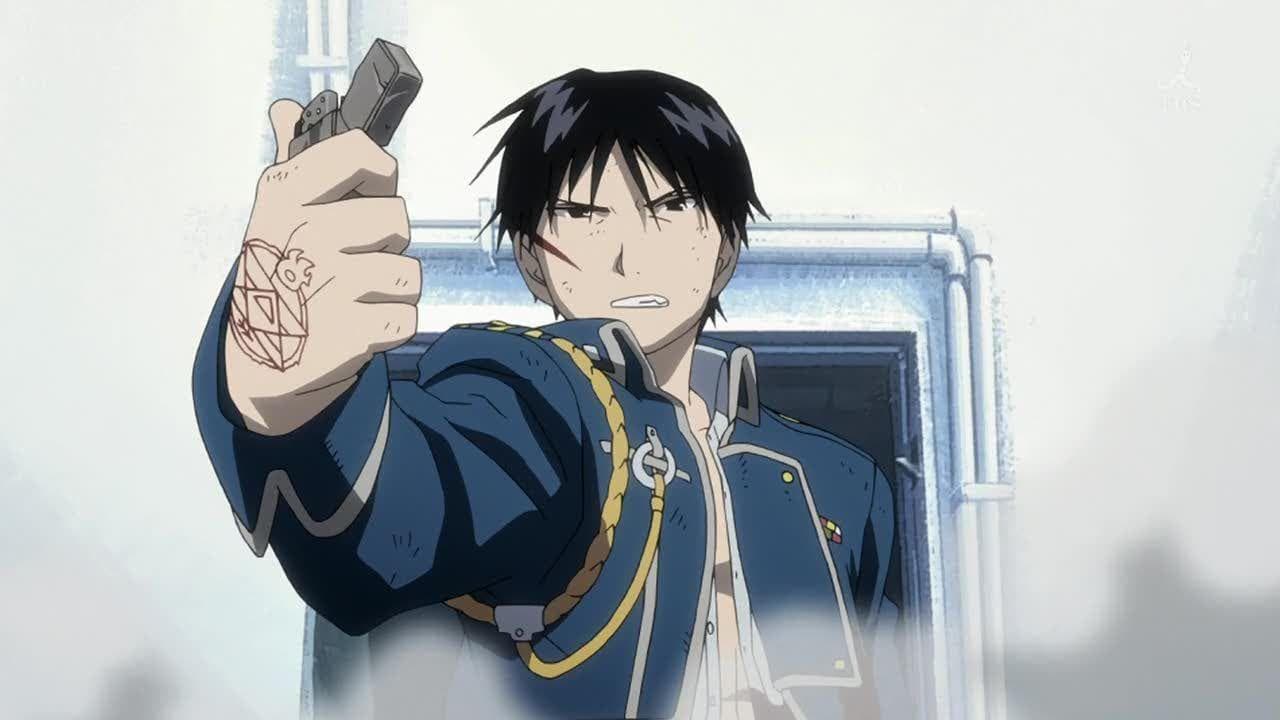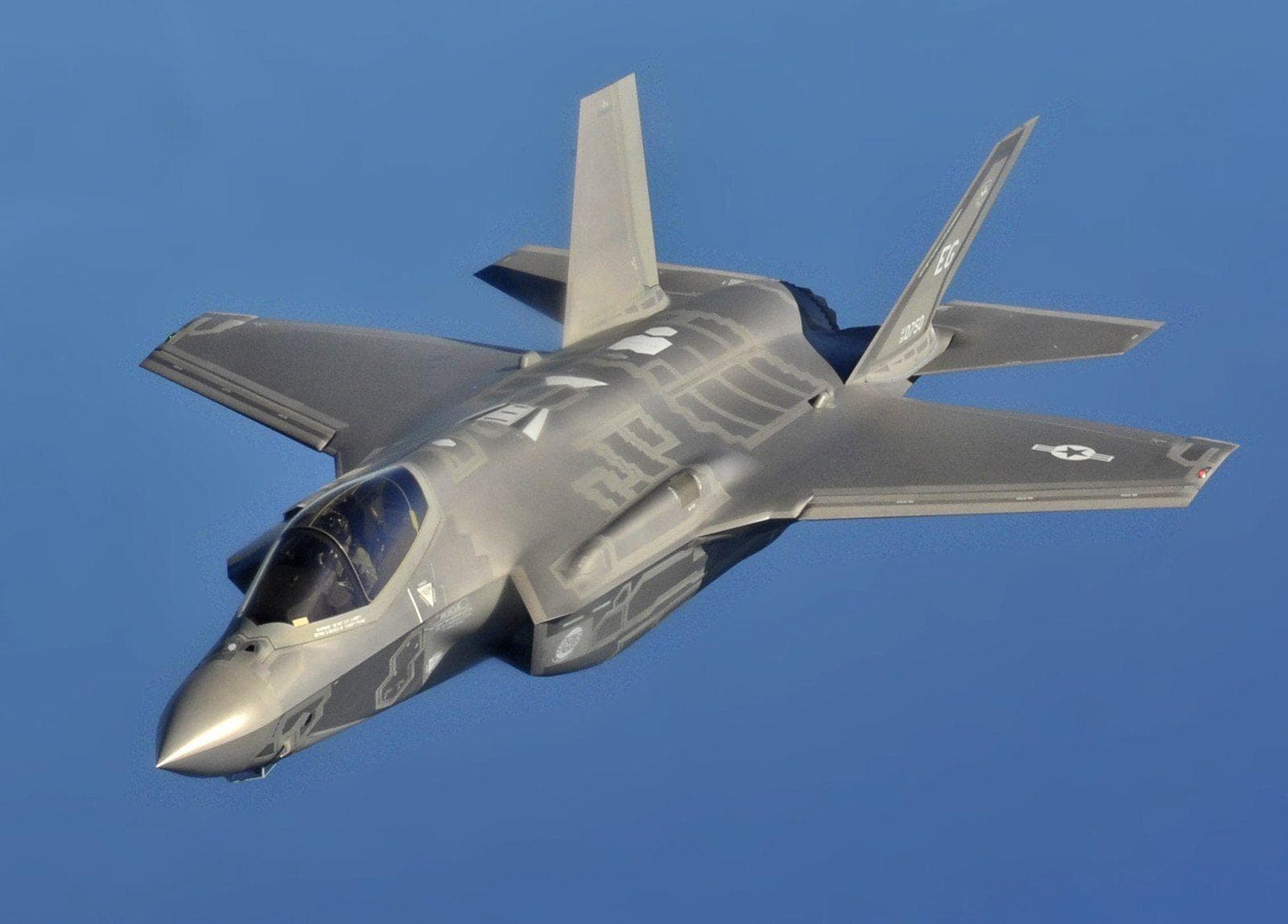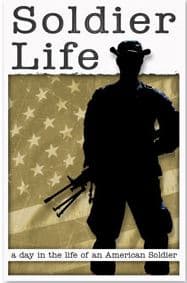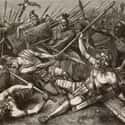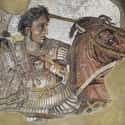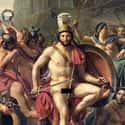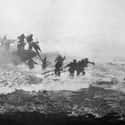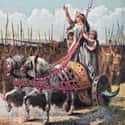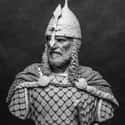-
(#1) Genghis Khan
Where and When: Genghis Khan, born Temujin, is one of the most recognizable figures in all of history. He united the tribes of Mongolia in the 12th century and then turned them outward, soon conquering an empire that spanned much of the Asian continent. Along the way, Genghis Khan and his Mongolian horde took out tens of millions of people.
The Arsenal: Like most Mongols, Genghis Khan did much of his fighting on horseback, and that technological advantage was the primary reason for the rapid expansion of his empire. That meant he was most comfortable wielding a composite bow, a lance, or a battle-ax, though he could also make use of a short sword when more close-quarters combat was called for.
His Training: Much of Mongolian training under Genghis Khan was informal. Children grew up competing in various martial-themed athletics until they were proficient with all manner of weaponry. From there on out, most of their education came on the campaign trail where their ability to quickly overwhelm their opponents ensured that every Mongol got plenty of experience in the art of killing.
In The Duel: The keyword for Genghis Khan is brutality. He and his army rode into battle on horseback at a furious pace and set about making mincemeat of anyone they could get their hands on. He used drums and flag signals to organize his troops through the chaos, and that only added to their cold efficiency. In any sort of duel, Genghis Khan is going to come at his opponents fast and hard, and he’s not going to stop until somebody is dead.
-
(#2) Spartacus
- Dec. at 38 (108 BC-70 BC)
Where and When: Spartacus was born in Thrace sometime around 100 BCE, but he didn’t stay there long, joining the Roman auxiliary as a young man before eventually deserting. This led to him being captured, enslaved, and sent to the gladiatorial pits. From there, Spartacus organized a slave revolt that eventually swelled to tens of thousands, defeating the Romans a handful of times before perishing in battle in 71 BCE.
The Arsenal: Spartacus himself and those other members of his rebellion to come from the gladiatorial pits would have had access to any number of weapons, including gladius swords, wooden shields, and leather armor. As a Thracian specifically, Spartacus would have used a parmula shield and a short sica sword, angled at the end.
His Training: Spartacus should have been an exceptionally well-trained individual. Not only did he grow up in the militaristic society of Thrace, but he was also trained as a member of the Roman auxiliary. Then after all that, he went to one of Rome’s famous “gladiator schools,” where he learned all manner of one-on-one combat.
In The Duel: Unlike most of the other great military leaders in history who typically only fought at the head of an army, Spartacus had plenty of experience facing solo opponents as a gladiator, which should serve him well in any hypothetical duel. His legendary ability to inspire others wouldn’t serve him well, but his craftiness and ability to adapt - as well as his willingness to fight dirty - would.
-
(#3) Alexander the Great
- Dec. at 33 (355 BC-322 BC)
Where and When: As if his nickname weren’t enough indication, Alexander the Great is considered to be one of the very best military leaders in all of history. In just seven short years as King of Macedon from 336 to 323 BCE, Alexander went conquest-wild and earned himself a bunch of other titles like King of Persia, Pharaoh of Egypt, and Lord of Asia. In anticlimactic fashion, however, he perished on his way home by either natural causes or poison.
The Arsenal: Alexander’s father, Philip II, refurbished the Macedonian army before handing it off to his son. Under his reign, infantry started to carry an enormous sarissa, a 22-foot pike with an iron tip that could be used to take down charging cavalry with ease. Alexander is alternately depicted wielding either a spear on horseback or a much shorter sword, but he’s always shown in shining armor.
His Training: Of all the legendary leaders of antiquity, Alexander the Great probably had the best education. He was personally tutored by Aristotle throughout his youth in everything but the art of warfare, which he learned directly from his father. While much of the focus would have been on strategy, it’s also obvious that Alexander was brought up to be an excellent fighter.
In The Duel: The most famous swing of Alexander’s sword was at an inanimate object, the Gordian Knot, but that doesn’t mean he wasn’t capable on the battlefield. In combat against the Persian Empire, he led his Royal Companion Cavalry charging right into the heart of the enemy. In one particular incident, Alexander was said to have caught up to Darius’ fleeing chariot and dispatched the driver, only for Darius to escape his clutches. If Alexander is showing up at a fight, he’s doing so on horseback, and with a brilliant strategy already in mind to defeat his opponent.
-
(#4) Miyamoto Musashi
- Dec. at 61 (1584-1645)
Where and When: Miyamoto Musashi’s own book opens with a line that roughly translates to “My name is Miyamoto Musashi, I have killed over sixty men in fights and duels.” Equally renowned for his swordsmanship as for his artistic talents, Musashi took the life of his first man at age 13, went on to live as a ronin for the rest of his long life, and wrote an important book on warfare on his deathbed in 1645.
The Arsenal: Musashi wouldn’t be bringing just one sword to the fight - he’d be bringing two. That’s because he invented his own brand of dual-wielding fencing known as nitō ichi-ryū. Those two katana-style blades and some minimal armor would be all he needed.
His Training: As a young man, Musashi was trained in the art of sword-fighting by his father. But given that he won his first duel at the age of 13, it’s no surprise that he quickly transitioned into a self-taught battler. Not only did he eventually open up his own nitō ichi-ryū school of sword-art, he went on to train several individuals who would go on to be influential in Japanese history.
In The Duel: Right off the bat, Musashi will have one major advantage: the number of swords in his hands compared to his opponents. Even if he loses one of them, he has a perfect record in one-sword duels, too. Having beaten at least 60 opponents in one-on-one duels, and with a possibly apocryphal tale of taking down dozens of assailants at once in one incident, there’s not going to be anybody in this brawl with more experience.
-
(#5) Leonidas I
- Dec. at 60 (539 BC-479 BC)
Where and When: Well-known by most as the central figure of the Battle of Thermopylae in 480 BCE (of 300 fame,) King Leonidas of Sparta led his city-state through a bloody 10-year reign. His primary mission in life was to halt the Persian invasion of Ancient Greece, which he ultimately did, though he gave up his life to do it.
The Arsenal: As part of a Spartan phalanx, Leonidas had no need for his own special set of equipment. In fact, it would have been counterproductive if he did. Spartan strategy revolved around every warrior having the same set of round shield, long spear, and short sword, which they then employed in a tight formation to overwhelm their enemies. Armor was secondary, though it certainly wasn’t as sparse as it appears in Hollywood adaptations.
His Training: Leonidas’ older half-brother was the heir to the throne of Sparta, and so young Leonidas entered into Hoplite training like any other Spartan commoner would have. This meant that the military culture of Sparta was fully ingrained in him and that he learned how to command a phalanx, the tactical trademark of the city-state.
In The Duel: King Leonidas might be in some trouble when it comes to a series of duels with other historical figures. Though he was undoubtedly a powerful fighter, he was used to working as part of a phalanx, and thus relied entirely on the support and positioning of his comrades to be effective in battle. If one takes a Spartan out of the phalanx, it should dramatically reduce their effectiveness, making Leonidas just another tough guy in a field that’s crawling with them.
-
(#6) Vlad the Impaler
Where and When: If Vlad the Impaler isn’t a household historical name, then the fictional character that he inspired certainly is: Dracula, Lord of the Vampires. Vlad III wasn’t an undead monster, but he was the rather bloodthirsty ruler of Wallachia throughout a tumultuous 15th century. He led Wallachia on three separate occasions, with his last stint ending in his death in battle - and, yes, along the way he did impale his fair share of enemies.
The Arsenal: Vlad III was a big fan of skewering his opponents on spikes as a show of brutality, but that wasn’t his go-to weapon on the battleground. Having been trained while a captive of the Ottoman Empire, Vlad became very familiar with the traditional weapons of the janissary including the bow, the javelin, and a curved scimitar.
His Training: Vlad spent much of his childhood as a hostage of the Ottoman Empire, which included plenty of torture, but they also trained the young man in the art of warfare. Learning alongside future janissaries, Vlad benefitted from their legendary martial discipline and vicious tactics, and he did it all without ever actually becoming loyal to the Empire itself.
In The Duel: Legend tells that Vlad the Impaler earned his second stint on the throne of Wallachia by personally beheading his predecessor, Vladislav II, in combat. That, combined with the whole impalement thing, gives a pretty good idea of what to expect from Vlad in any duel: brutality, viciousness, and unfettered violence. He might not be the most skilled swordsman in the fight, but he’s probably the meanest.
-
(#7) Hannibal
- Dec. at 64 (246 BC-182 BC)
Where and When: Hannibal of Carthage’s reputation as one of the greatest military commanders in ancient history isn’t based entirely on his crossing of the Alps to invade Rome in 218 BCE, but it does play a central role. Before that, he helped conquer Hispania, but then it was on to the Second Punic War, a campaign that he would give the bulk of his life to. Ultimately, Hannibal chose to take his own life rather than allow himself to be imprisoned in Rome.
The Arsenal: Carthaginian weaponry was very similar to that of the Ancient Greeks, and the Hoplites in particular. Thus, they were mostly outfitted with shields, long spears, and short swords, and given that Hannibal was the sort of leader who charged into battle alongside his troops, one has to assume he was similarly equipped. It is unknown, however, if Hannibal truly wielded a spear long enough to strike from elephant-back as he is sometimes depicted in art.
His Training: Young Hannibal traveled with his father during the conquest of Spain where he learned how to be a soldier and commander through hands-on experience. He would have been involved in direct warfare in his early teens and took command of his first troops at the age of 23, a good indication of how fast of a study he was.
In The Duel: Hannibal was obviously an inspiring figure; he did convince an entire army to cross the Alps, after all. It is said that much of the belief in him came from his overwhelming bravery in battle, which included charging into enemy lines at the front of his troops. That courage should serve him well in a duel. If he’s able to fight on an elephant, he should be able to literally stomp all over the rest of the competition. But if he has to fight on the ground, he would find himself equally matched.
-
(#8) Jack Churchill
- Dec. at 90 (1906-1996)
Where and When: Unlike most of the other famous swordfighters in history, Fighting Jack Churchill stuck around well into the modern age - living from 1906 to 1996. In the interim, Churchill became a WWII legend for the British army, both because of the courage he always brought to the field.
The Arsenal: As a member of the British infantry, Churchill would have been outfitted with the standard uniform and weaponry, but he also brought his own fun to the party. Churchill marched into battle playing his bagpipe, with a traditional English longbow strapped to his back and an enormous Scottish claybeg sword at his side.
His Training: Rising through the British officer ranks, Churchill received a great deal of training from early adulthood onward; so much so that he was already well versed in martial matters by the time WWII broke out. His skill with a bow and sword, however, must have been the result of his upbringing, because it’s not something he would have learned in the army.
In The Duel: Churchill is believed to have slain at least one person with his longbow and engaged in sword combat on a number of occasions, including one incident in which he captured 42 Germans at sword-point. The fact that he was doing all this in the era of the machine gun is a true testament to the insane amount of bravery he would bring to a hypothetical duel, though some sort of rule would have to be created to prevent him from whipping out a gun at some point and blasting away at the others.
-
(#9) Boudica
Where and When: As far as origin stories go, Queen Boudica of the Iceni’s sounds like something out of a comic book. Her husband, Prasutagus, was betrayed by the Romans and slain. Then, Boudica was publicly flogged and her daughters were raped. Rather than be defeated, she instead allied herself with a handful of other Celtic tribes in rebellion against the empire. Boudica led her army all the way to Londinium and burned it to the ground. When Suetonius and the Romans returned in full force, her troops were routed, and Boudica decided to take her own life rather than be captured in 61 CE.
The Arsenal: Boudica led from the back of a horse-drawn cart, which combined with her hip-length hair and unusual height made for an intimidating figure. She and her forces mostly carried long spears, though they had swords, as well. Julius Caesar claimed that Boudica and her allies went into battle naked and dyed blue, which may not be entirely true, but suffice it to say that their armor was lacking.
Her Training: Boudica’s rebellious troops were said to be equally filled with men and women, and so it stands to reason that martial training of some sort was an aspect of a young girl’s life in the Iceni tribe including Boudica’s. Unfortunately, no specifics are known.
In The Duel: Boudica is most famous for riding around in a chariot with her daughters before her final fight, taunting her enemies and rousing her allies, but she also rode that chariot directly into the fight. Even in a route, she evaded capture long enough to take a fatal poison, so one can assume that she was a rather competent driver. Anyone expecting mercy from Boudica will be unpleasantly surprised, as the atrocities committed in her name will attest to. She will fight with righteous fury, and nothing else, but that can only take a person so far.
-
(#10) Saladin
Where and When: Saladin was one of the greatest heroes during the Crusades era, thanks to some rather impressive victories on his resume. Ruling over modern Egypt, Syria, Yemen, and Palestine from 1169 until his passing in 1193, Ṣalāḥ al-Dīn Yūsuf ibn Ayyūb won renown for capturing Jerusalem from the Franks and from fighting Richard the Lion-Heart to a difficult draw in the Third Crusade.
The Arsenal: Saladin was known to wield a large scimitar in battle, and he wasn’t afraid to use it. On one occasion, he is said to have personally cut the head off a notorious French crusader. Anything else is secondary when one has a big sword in their hands and is willing to swing it head-high.
His Training: From a young age, Saladin took mentorship from brilliant military minds, including the famous anti-crusader Nur al-Din and Shirkuh, his uncle. They would have personally trained him in both combat and strategy, lessons that he carried with him in his own rise to prominence.
In The Duel: Saladin could be brutal when necessary and engaged in his fair share of executions, but he was also wise enough to avoid violence for violence’s sake. One of his battlefield trademarks was his remarkable willingness to put himself at risk, charging into battle without any care for his own life, but that could either pay off or backfire horribly in a duel with other, perhaps more cautious, historical figures.
-
(#11) Skanderbeg
- Dec. at 63 (1405-1468)
Where and When: Gjergj Kastrioti, more often referred to as Skanderbeg, is one of the most important figures in Albanian history, but not so well-known outside that country. He’s notable for being raised as a hostage in the Ottoman Empire and becoming one of their greatest military commanders, only to turn on the Empire in 1443 and go right back to fighting against them as a proud Albanian. Along the way, he became a symbol in the ongoing conflict between Islam and Christianity.
The Arsenal: Skanderbeg’s sword, a Damascan scimitar, still sits in a museum in Vienna. Having been brought up alongside the janissaries of the Ottoman Empire, that would have only been one small part of his arsenal, but it was the one that made him legendary.
His Training: Training alongside the enslaved Janissaries infantry of the Ottoman Empire from a young age, Skanderbeg would have learned extreme discipline and fortitude. Ferocity and fearsomeness would become his trademarks, but his education made those things secondary to careful planning, preparation, and cohesiveness on the battlefield.
In The Duel: Skanderbeg was an absolute killing machine; he was said to have personally slain three thousand Turks over a couple of decades after defecting from the empire. While that may be apocryphal, it’s evident that he was not the sort to lead his troops from the back. Over time, he developed a unique style of guerilla warfare that made perfect use of Albania’s terrain. In other words, his opponents in an all-out fight to the finish might not actually see Skanderbeg on the battlefield until it’s too late.
-
(#12) Xiang Yu
- Dec. at 30 (231 BC-201 BC)
Where and When: Xiang Yu only lived for 30 years between 232 and 202 BCE, but in that time he overthrew the Qin dynasty and warred against the establishment of the Han dynasty. As supreme commander of the rebellious Chu forces, Xiang Yu found enormous success, eventually capturing the capital and executing the final Qin emperor before being usurped by one of his own generals.
The Arsenal: As early adopters of iron, Xiang Yu and his fellow rebels would have been heavily armored and wielding some impressive swords. With his legendary physical strength, Xiang Yu himself probably would have carried a larger sword than most, as he was said to be able to lift enormous objects with ease.
His Training: Xiang Yu was born into a prominent family, but was from a region that had been absorbed into the Qin dynasty and was in a state of revolt, which meant he had to pick up some martial prowess fairly early on in life. The young Xiang Yu joined his uncle’s army and trained with them before eventually taking over as supreme commander. That upbringing led him to develop both a uniquely impressive physique and a brilliant tactical mind.
In The Duel: Xiang Yu’s tactical mind would be of some use in an all-out brawl, but it’s his prodigious strength that would really come in handy. He would operate like a classic “tank” archetype by overwhelming opponents physically and using his armor to absorb damage while he did it.
-
(#13) Shaka
- Dec. at 41 (1787-1828)
Where and When: Sigidi kaSenzangakhona, known more commonly as Shaka, was the man behind the expansion of the Zulu Empire from 1816 to 1828. Though he only reigned for a little over a decade, Shaka permanently transformed the Zulu culture into a more militaristic model, and he did such a good job of it that his people were briefly able to stand toe-to-toe with the British Empire a few decades later in the Anglo-Zulu War.
The Arsenal: Before Shaka, the Zulus were known for their ox-hide shields and long throwing spears. He revamped that system, swapping out the strictly projectile weapons for shorter assegais with long iron blades and putting a greater emphasis on close-quarters combat and phalanx-like strategy. Armor was not a priority for the Zulu.
His Training: To say that Shaka was well-trained would be a bit of a misnomer because he outright invented his own form of warfare. In other words, he was the trainer, not the trainee. By organizing his people into impi units, Shaka put the emphasis on careful teamwork, clever manoeuvering, and close-quarters ferocity, and he embodied those qualities himself on the battlefield.
In The Duel: Shaka would make an immediate impact in a hypothetical all-out battle through his sheer intimidating presence and willingness to charge into the fight with little protection, but he would also be at a disadvantage once that original shock wore off. The impi did their best work as a unit, and in a one-on-one situation Shaka’s ox-hide shield and wooden spear just wouldn’t hold up to an iron sword (or, even worse, many iron swords.)
-
(#14) Marcus Claudius Marcellus
- Dec. at 60 (267 BC-207 BC)
Where and When: Marcus Claudius Marcellus was known as the “Sword of Rome,” and it’s definitely a nickname he earned the hard way. He was a vital leader in both of the Punic Wars and the Gallic War and five-time elected consul. He often went head-to-head with Hannibal on the field throughout the 3rd century BCE, a rivalry that eventually culminated in his death.
The Arsenal: Like any good martial Roman, Marcus Claudius Marcellus had a variety of weapons at his disposal including a gladius on his hip and a scutum shield for protection. Combined with their considerable armor, Romans were intended to fight at close-quarters, bashing with their shields and stabbing with their swords.
His Training: The Roman Army took training and organization very seriously, and someone of Marcus’s prominence would have received the best education available. As such, he was no doubt well-versed in military tactics and hand-to-hand combat from a young age, which is evidenced by some of his early success at war.
In The Duel: Marcus Claudius Marcellus was the sort of Roman who led from the front. He wasn’t afraid to charge into battle at the head of his troops, and on at least one occasion he challenged an opposing leader, Viridomarus of Insubria, to a duel and won handily. In other words, he’s equally comfortable fighting in a fray and skirmishing one-on-one, which should serve him very well in any sort of hypothetical battle royale situation.
-
(#15) Tomyris
Where and When: Tomyris was the leader of the Massagetean people, part of the Scythian culture. Though few concrete facts are known about her, it is recorded that she personally defeated Cyrus the Great in approximately 530 BCE as revenge for his slaying of her son. Any other notable accomplishments have been lost to time, though it should be noted that her status as a woman warrior was apparently not unique among her people.
The Arsenal: The Massageteans were said to be big fans of brass, and so much of their weaponry was presumably crafted with it. It is known that she possessed at least one good sword because she charged into battle against the Persians with it and then used it to chop off Cyrus’s head.
Her Training: Little is known about any training that Tomyris would have received as a young girl, but the remains of hundreds of other warrior women have been found in various Scythian kurgans (grave mounds) in the region, with nothing to distinguish them from male soldiers other than their sex. It seems likely that Massageteans were raised in a military atmosphere, regardless of their gender.
In The Duel: Tomyris charged into battle against the Persians alongside the men and women of her army, and her fury must have been a sight to behold. Though she certainly had apt reason to be upset at Cyrus the Great, that after beheading him she defiled his head and crucified his body should be ample evidence of her capacity for cruelty. She’s not going to be one to shy away from any brawl, though her bronze weapons might hold her back against more contemporary legends.
-
(#16) Moctezuma II
- Dec. at 54 (1466-1520)
Where and When: Montezuma (or Moctezuma) II is perhaps best known as the Aztec king during the Spanish Conquest in 1520, but he was enjoying a nice string of success before Hernan Cortes showed up. He grew the empire he inherited from his uncle through diligent campaigns of militaristic expansion, but that stopped when a foreign enemy appeared on his shores.
The Arsenal: Montezuma would have been most comfortable wielding a macuahuitl, an intimidating combination of club and sword. The Aztec army would have carried round shields but little in the way of armor, though they favored projectile weapons whenever possible. Montezuma himself was said to be particularly proficient with the blow-dart.
His Training: Not much is known of Montezuma’s early life, or what training he might have received, but it was clearly enough for him to play an active role in warfare both before and during his own campaigns of conquest. Given the eye-catching clothing and accessories worn by Montezuma and his people into battle, it’s also apparent that ceremony and tradition played a big role in their militaristic culture.
In The Duel: On his own playing field, Montezuma II was nearly unbeatable. Given his reputation for being tricked by Cortes, it stands to reason that his opponents might underestimate him in a duel, but they do so at their own peril. Without the worry of facing crossbows and muskets, Montezuma might just get his revenge, so long as he doesn’t get fooled again.
New Random Displays Display All By Ranking
About This Tool
In ancient history, many great politicians, thinkers, artists, and scientists have emerged, among which many outstanding military strategists and generals have appeared and remembered. Unlike the legendary warriors most people know, some heroes in history have lost their lives for the sake of war, even if they are defeated, their heroic deeds have been recited by generations to come.
In different human civilizations, there are many great historical figures in various fields, but no one has shed more blood than the greatest warrior in history. The random tool introduced the 16 strongest legendary warriors, we can learn their stories in different legends or history books.
Our data comes from Ranker, If you want to participate in the ranking of items displayed on this page, please click here.

